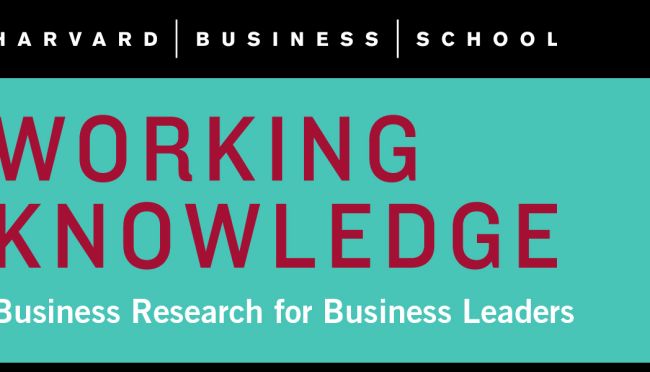
- 29 Oct 2018
- Research & Ideas
Hunting for a Hot Job in High Tech? Try 'Digitization Economist'
Amazon has more economists on staff than any university economics department, and technology firms are snapping them up the minute they graduate, says Michael Luca. Why? Call it the economics of digitization. Open for comment; 0 Comments.

- 19 Sep 2017
- Working Paper Summaries
An Invitation to Market Design
Effective market design can improve liquidity, efficiency, and equity in markets. This paper illustrates best practices in market design through three examples: the design of medical residency matching programs, a scrip system to allocate food donations to food banks, and the recent “Incentive Auction” that reallocated wireless spectrum from television broadcasters to telecoms.
- 16 Sep 2015
- Research & Ideas
Can Applied Economics Save Homeless Puppies?
At a startup she co-founded while pursuing a doctorate in economics, Christine L. Exley is rescuing dogs with principles of market design. Open for comment; 0 Comments.
- 08 Nov 2010
- Research & Ideas
How to Fix a Broken Marketplace
Alvin E. Roth was a co-winner of the Nobel Prize in Economic Science this week for his Harvard Business School research into market design and matching theory. This article explores his research. Key concepts include: Successful marketplaces must be "thick, uncongested, and safe." Sufficient "thickness" means there are enough participants in the market to make it thrive. "Congestion" is what can happen when markets get too thick too fast: there are heaps of potential players, but not enough time for transactions to be made, accepted, or rejected effectively. "Safety" refers to an environment in which all parties feel secure enough to make decisions based on their best interests, rather than attempts to game a flawed system. Closed for comment; 0 Comments.

- 19 May 2010
- Working Paper Summaries
The Job Market for New Economists: A Market Design Perspective
How should the most appropriate employers and job candidates find each other? Newly minted economists typically send applications to an average of 80 potential employers, and as a result, many employers receive hundreds of applications. It is extremely time-consuming to sort through all the applications, and as the process unfolds, there is a risk of coordination failure, in which employers and candidates who would be well-suited do not manage to create a match. In this paper, HBS professors Peter A. Coles and Alvin E. Roth and colleagues provide an overview of the market for new PhD economists and describe new mechanisms to improve the matching process. They conclude by discussing the emergence of platforms for transmitting job market information, and other design issues that may arise in the market for new economists. Key concepts include: Practical market design is often a response to particular problems. A new market design often leads the way to developing new knowledge. Two new mechanisms have facilitated matches. The first, a signaling service, allows job candidates to express interest to a limited number to potential employers prior to interviews at association meetings. The second mechanism, a web-based "scramble," reduces search costs and "thickens" the late part of the job market for candidates and employers still seeking a match. Closed for comment; 0 Comments.
- 30 Jul 2007
- Research & Ideas
Repugnant Markets and How They Get That Way
Repugnance is different in different places and at different times, says Harvard economist Alvin E. Roth in this Q&A. As someone who designs and builds new markets, he marvels at how society decides whether a transaction is "good" or "bad"—even when such transactions are very much alike. Key concepts include: "Repugnant transactions" are transactions that some people don't want other people to engage in. From the point of view of economists, the phenomenon of repugnant transactions can be a serious constraint on markets and market design. When a market is illegal, the versions of it that arise can be quite dangerous. It is difficult to compare how markets operate when they're illegal with what it would be like if they could operate legally. Closed for comment; 0 Comments.

Building a Nonprofit Marketplace to Feed America
Feeding America manages a network of more than 200 food banks nationwide. Scott Duke Kominers and Canice Prendergast discuss how the organization designed a fair and efficient marketplace for food distribution. Open for comment; 0 Comments.